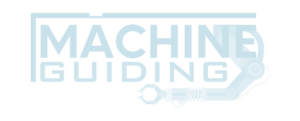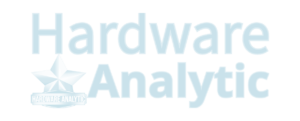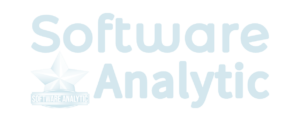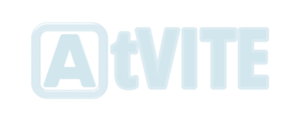The need to prioritize data security comes with the increasing use of cloud-based services. Protecting sensitive information in the cloud is crucial to maintaining customer trust, complying with regulations, and safeguarding business continuity. This article will explore SaaS security best practices to help organizations establish robust security measures and effectively protect their data in the cloud.
Understanding SaaS Security
In today’s digital era, businesses rely heavily on Software as a Service (SaaS) explanations to streamline operations and improve efficiency. SaaS security is the strategies and practices implemented to protect data, applications, and infrastructure in cloud-based SaaS solutions. As organizations increasingly rely on SaaS applications, understanding the unique security challenges associated with this model is essential. In a SaaS environment, the responsibility for security is shared between the organization and the SaaS provider. While the provider ensures the security of the underlying infrastructure and application, organizations must take steps to protect their data and user access. Key aspects of SaaS security include data confidentiality, integrity, and availability.
SaaS security involves implementing strong authentication mechanisms, such as multi-factor authentication and single sign-on. Robust data encryption methods, both in transit and at rest, safeguard sensitive information from interception and unauthorized disclosure. Organizations must also prioritize regular backups, disaster recovery planning, and secure data storage to ensure data availability and business continuity. Additionally, monitoring and auditing user activities, conducting vulnerability assessments, and staying compliant with relevant regulations contribute to a robust SaaS security strategy.
Implementing Strong Authentication Mechanisms
Implementing MFA adds a layer of SaaS security by requiring users to provide multiple verification forms, such as passwords, biometrics, or one-time codes. It helps protect against unauthorized access even if one factor is compromised. SSO helps users to access multiple applications with a single set of credentials. It simplifies user management, reduces the risk of weak passwords, and enhances SaaS security by centralizing authentication.
Enforcing Robust Data Encryption
Implement TLS protocols to encrypt data transmitted between systems and the SaaS provider. TLS ensures that data remains confidential and protected from interception during transmission. Employ data encryption at rest to secure confidential information stored in databases or file systems. Encryption renders data unreadable and useless to unauthorized individuals, providing additional protection.
Regular Data Backups and Disaster Recovery
Perform frequent backups of critical data to an independent location. This practice mitigates the risk of data loss due to accidental deletion, system failures, or cyber-attacks, allowing for a swift recovery. Develop a detailed plan outlining the steps to be taken during a data breach, natural disaster, or other emergencies. This plan ensures business continuity and minimizes the impact of potential disruptions.
Conducting Vulnerability Assessments and Penetration Testing
Vulnerability assessments and penetration testing are critical components of a comprehensive safety strategy for any organization utilizing SaaS solutions. These practices help identify vulnerabilities, assess SaaS security weaknesses, and proactively address potential risks before malicious actors can exploit them. Vulnerability assessments involve scanning and evaluating systems, networks, and applications for known vulnerabilities. By using automated tools and manual techniques, organizations can identify weaknesses such as outdated software versions, misconfigurations, or inadequate access controls. The assessment provides valuable insights into the organization’s security posture, enabling timely remediation actions.
Penetration testing takes vulnerability assessments a step further by simulating real-world attacks. Ethical hackers exploit identified vulnerabilities to assess the impact and potential risks to the organization. By conducting controlled attacks, organizations can identify critical vulnerabilities that may have been missed during vulnerability assessments. Penetration testing helps validate existing security controls, detect unknown vulnerabilities, and assess the organization’s ability to detect and respond to SaaS security incidents.
Monitoring and Auditing
Monitor and analyze log files to detect suspicious activities, unusual access patterns, and potential security breaches. Promptly investigate and respond to any identified anomalies. Implement user activity auditing to track user actions, detect unauthorized access attempts, and identify potential insider threats. Monitoring user activity helps organizations identify and mitigate security risks in real time.
Maintaining Up-to-Date Systems and Software
Keep all Software, operating systems, and applications updated with the latest patches and security updates. Patching known vulnerabilities helps protect against exploitation by threat actors. Establish strong relationships with SaaS providers and ensure they maintain robust security practices. Regularly review security documentation and agreements to ensure compliance with your organization’s security requirements.
Employee Security Awareness Training
Establish clear security policies and procedures and communicate them to all employees. Ensure that employees know their commitments regarding data security and the consequences of non-compliance. Conduct regular security awareness training sessions to educate employees about common security threats, safe browsing practices, and the importance of data protection. Encourage employees to report any suspicious activities promptly.
Data Privacy and Compliance
Data privacy and compliance are crucial for organizations utilizing SaaS solutions. As businesses increasingly store and process sensitive data in the cloud, adhering to data privacy regulations and industry compliance standards is essential. Data privacy protects personal and sensitive information from unauthorized access, use, or disclosure. Organizations must classify their data based on sensitivity and implement appropriate access controls and protection mechanisms. It includes encrypting data at rest and in transit, maintaining strong authentication mechanisms, and monitoring data access and usage regularly.
Compliance refers to legal and industry regulations relevant to data protection, depending on the organization’s geographic location and industry, such as the General Data Security Regulation (GDPR), the California Consumer Secrecy Act (CCPA), and the Health Insurance Portability and Accountability Act (HIPAA). Compliance requires organizations to understand the specific requirements of these regulations, implement necessary security measures, and ensure proper data handling, disclosure, and consent practices. By prioritizing data privacy and compliance, organizations can build trust with their customers, avoid legal and financial penalties, and protect the integrity of their data. It is essential to regularly monitor and update privacy policies, conduct internal audits, and stay informed about evolving regulations to maintain a strong data privacy and compliance framework.
Incident Response Planning
Establish a dedicated incident response team responsible for promptly detecting, responding to, and recovering from security incidents. Incident Response Plan Develop an exhaustive incident response program that outlines the actions to be taken during a security breach. Regularly test and update the plan to address evolving threats and technologies.
Continuous Security Monitoring and Improvement
Define security metrics and key performance indicators (KPIs) to measure the usefulness of your security controls and monitor for any deviations or anomalies. Conduct periodic security assessments and audits to evaluate the effectiveness of your security measures. Use the findings to make informed decisions and continuously improve your security posture.
Conclusion
Protecting data in the cloud is paramount for businesses in today’s digital landscape. Organizations can safeguard their data from unauthorized access by implementing SaaS security best practices, maintaining regulatory compliance, and ensuring business continuity. Strong SaaS security authentication mechanisms, robust data encryption, regular backups, and disaster recovery plans form the foundation of a secure SaaS environment. Conducting vulnerability assessments, penetration testing, and continuous monitoring helps proactively identify and address security vulnerabilities. Additionally, employee security awareness training, compliance with data privacy regulations, incident response planning, and continuous improvement are vital components of a comprehensive SaaS security strategy. By adopting these best practices, businesses can effectively protect their data in the cloud and mitigate risks associated with SaaS usage.
Read: Cybersecurity Software: A useful review











